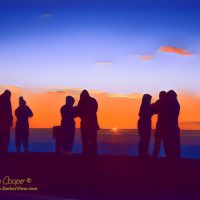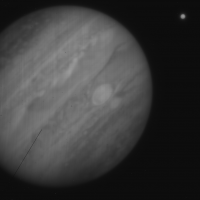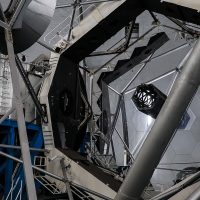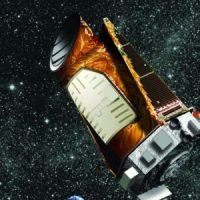Aloha to our scientific colleagues around the world,
On behalf of the more than 500 people employed by the Maunakea Observatories, we offer a perspective about the Maunakea situation with the sincere hope that our words encourage greater understanding of the complex circumstances in which we find ourselves.
Staff members of the Maunakea Observatories, many of whom are born and raised in Hawaiʻi, feel a deep and personal connection to the special people and place of our Hawai‘i Island home. We live and work together in a community where our success is measured by the quality of our relationships, one of the paramount reasons life here is enriching, rewarding and inspiring. Even in conflict, our differences don’t define us; our humble, reverent appreciation of our community does. The diverse mix of scientists, technicians, engineers, administrators, and students of the Maunakea Observatories continually seek a path forward that strengthens the future of our island community. Our local staff, family members, and friends have a wide range of views and strong feelings about the events that surround us. We deeply respect all these viewpoints, which come from our family and friends, and we both believe and champion their right to express them.
In our community, we are weathering the pain of rifts in these carefully tended relationships that will take mutual respect and time to heal. We know these challenges across our island home have gained attention with our peers in the international astronomy community. We understand your expressed concerns. We also urge your appreciation of the nuances and complexity of the issues we now face.
The future of Maunakea astronomy will be defined primarily by the diverse people of Hawaiʻi. The vast majority of island residents support the Maunakea Observatories, who have been part of this community for more than 50 years. Conflict about the Thirty Meter Telescope does not change the long-standing support our Observatories have earned, but it will undoubtedly influence its future. For the benefit of the people who work on the mountain, for those who practice their culture and religion on the mountain, we look to a future beyond coexistence because that still implies barriers. We look to a future in which knowledge and worldviews hybridize to create a reality more beautiful and resilient than its progenitors.
This is beginning already, through A Hua He Inoa, the interstellar asteroid ‘Oumuamua, black hole Pōwehi, and the unusual asteroids recently officially named Kamo‘oalewa and Ka‘epaoka‘awela by Hawaiian students. We look to a future for Maunakea where studies of the universe are buoyed by the wisdom of Hawaiian kupuna and grounded in the richness of Hawaiian culture. We are nurturing this future now as devoted members of the Hawaiʻi Island and international astronomy communities. We ask for the informed understanding and support of our international astronomy community to uphold this vision, which we believe will be an important part of everyone’s future.
Mahalo,
Director Doug Simons, Canada-France-Hawaii Telescope
Director Pierre Martin, Hoku Kea Observatory
Director Jennifer Lotz, Gemini Observatory
Director Paul Ho, James Clerk Maxwell Telescope (East Asian Observatory)
Interim Director Robert McLaren, Institute for Astronomy
Director John Rayner, NASA Infrared Telescope Facility
Director Michitoshi Yoshida, Subaru Telescope
Director Klaus Hodapp, UKIRT
Director Hilton Lewis, W.M. Keck Observatory (Keck I and Keck II)










